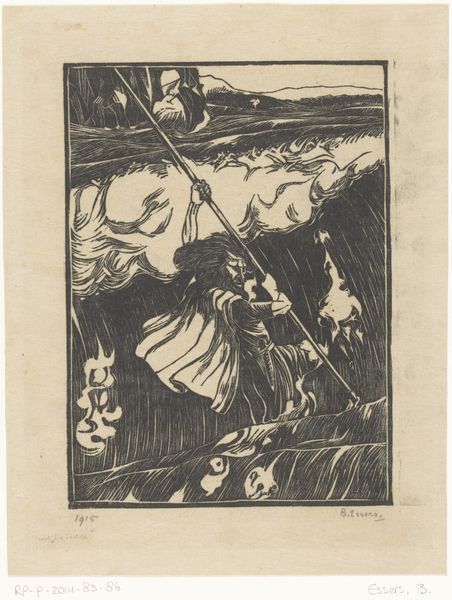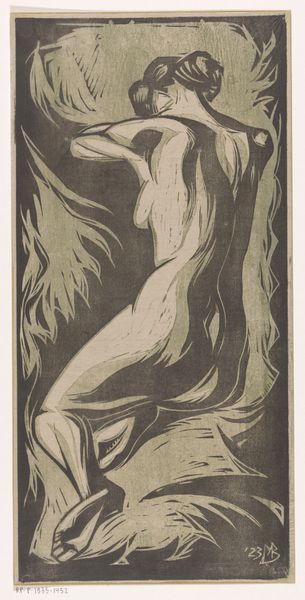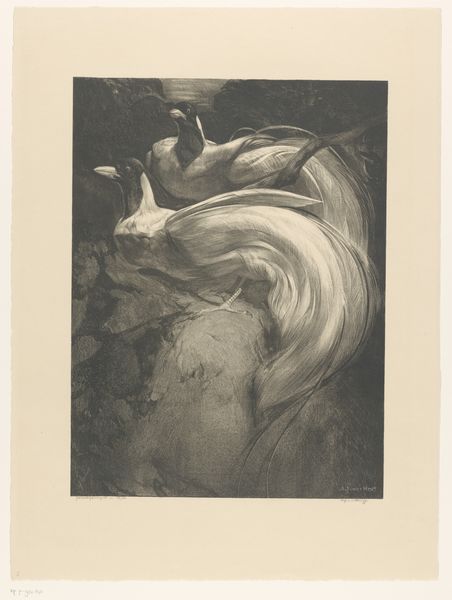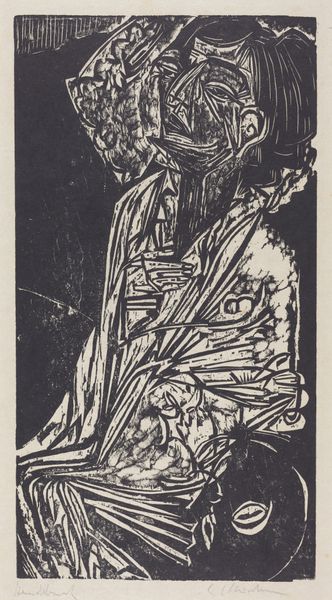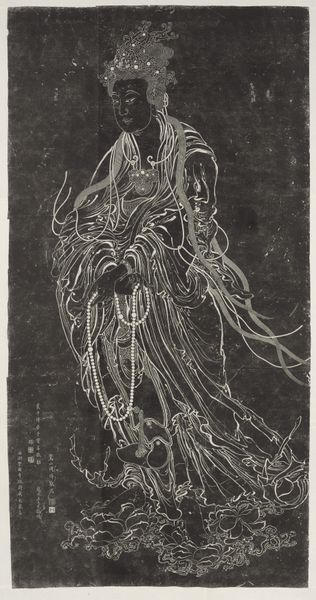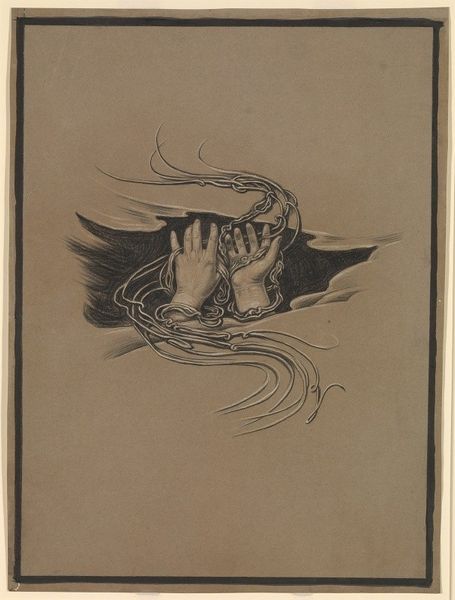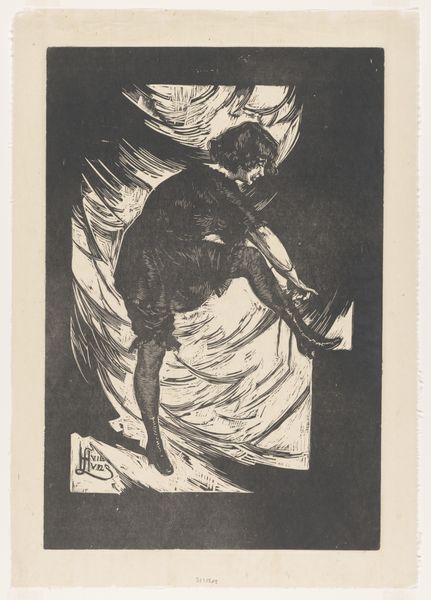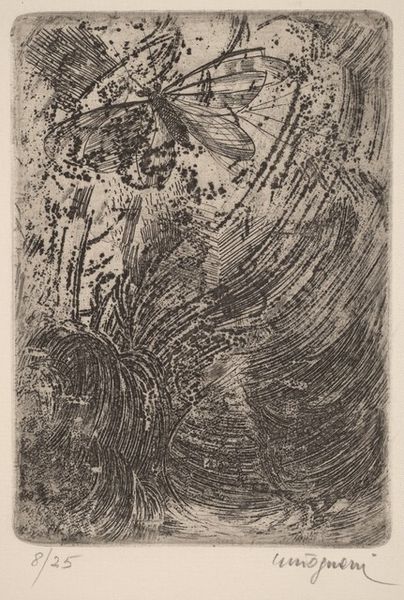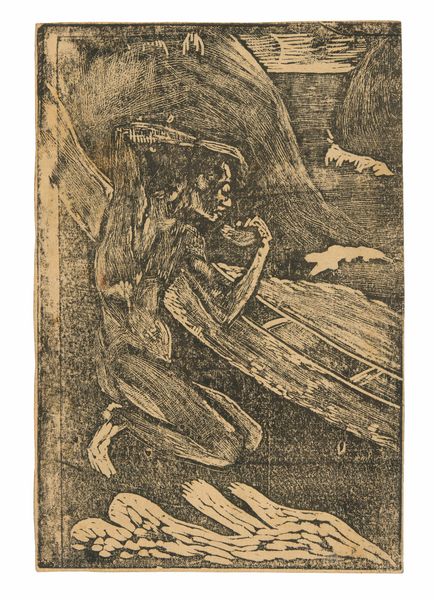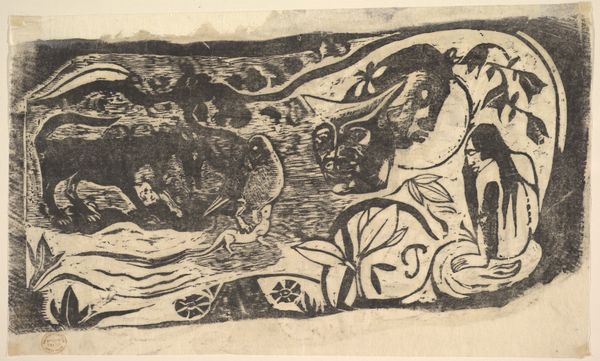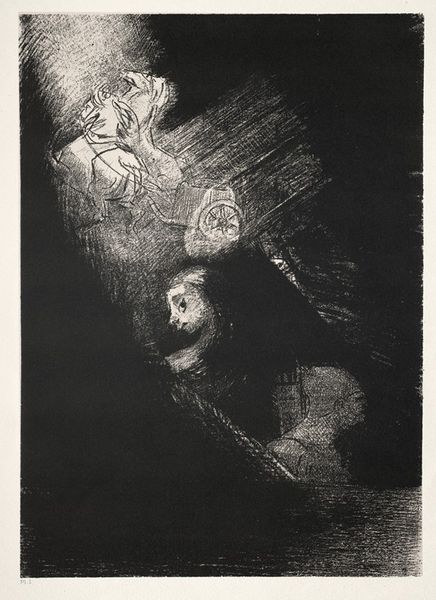
print, etching, engraving
#
ink drawing
# print
#
etching
#
figuration
#
post-impressionism
#
engraving
#
erotic-art
Dimensions: image: 35.8 x 20.5 cm (14 1/8 x 8 1/16 in.)
Copyright: National Gallery of Art: CC0 1.0
Curator: Paul Gauguin’s etching and engraving, "Te Faruru (They are Making Love Here)," created between 1894 and 1895, offers a glimpse into his Tahitian-inspired visual language. Editor: It's striking—almost dreamlike in its ambiguity. The brown monochrome gives it an ethereal quality, and the figures seem to emerge from a primordial soup. The textures contrast sharply between fluid lines and areas of near solid colour. Curator: Absolutely. Gauguin was deeply interested in capturing what he perceived as the unspoiled, primal aspects of Tahitian life and incorporating their spiritual beliefs into his art. The title itself, “Te Faruru,” hints at an act of intimate connection. Given the composition and figures portrayed, however, it reads as something far more spiritual, and the choice to not use indigenous printmaking and carving techniques adds to this distinction. Editor: Looking closer at the composition, the placement of figures seems significant. They don't engage with the viewer directly, drawing our attention to the linear qualities defining the figures and objects. The dense texture of the figures compared to the almost solid mass surrounding them gives them an otherworldly aura. Curator: Remember that Gauguin was part of a Post-Impressionist movement pushing against the purely representational art—Gauguin was focused on expressing inner visions and a type of collective, perhaps subconscious memory. You can clearly see elements of Tahitian symbology influencing the rendering of form here. Editor: But is this simply Gauguin's construction of Tahiti filtered through a European lens? The way he simplified and abstracted the human forms is an interesting dialogue between the cultures being explored. It seems more of a projection of fantasies onto an exoticised “other,” rather than any authentic representation. Curator: It's undeniable that Gauguin approached Tahitian culture as an outsider. The "erotic art" theme, as it's sometimes labeled, speaks to a very specific Western gaze. But that tension is exactly what makes his work so compelling. He's wrestling with genuine emotion and flawed perception simultaneously. The work leaves us grappling with complex cultural dynamics. Editor: A compelling thought, framing this in an intercultural discourse definitely challenges our aesthetic reaction and offers a new framework for reading these exotic themes, as perceived by Gauguin.
Comments
No comments
Be the first to comment and join the conversation on the ultimate creative platform.
